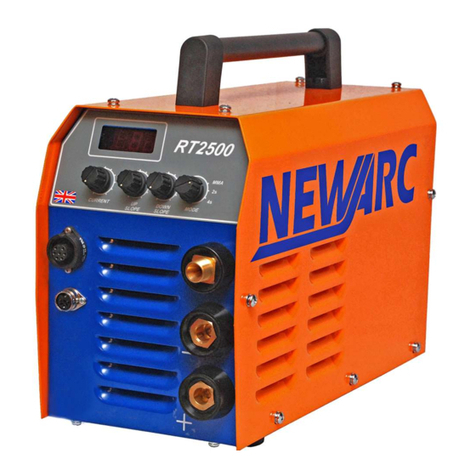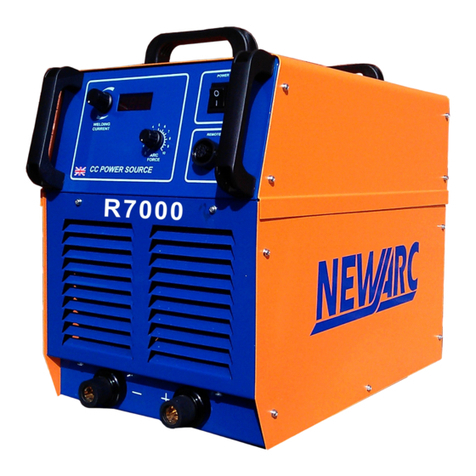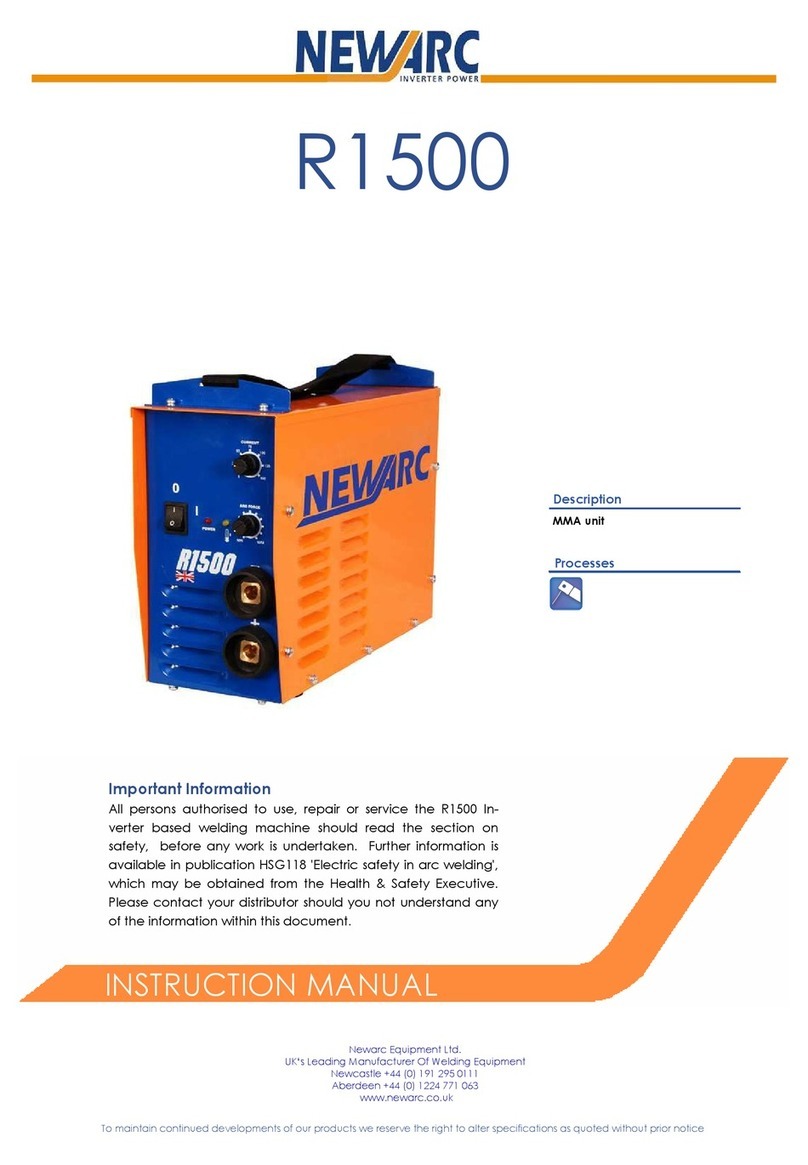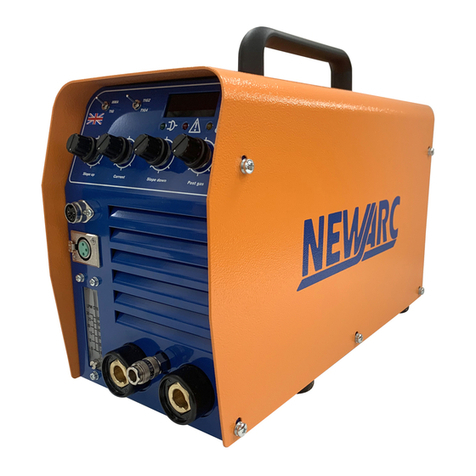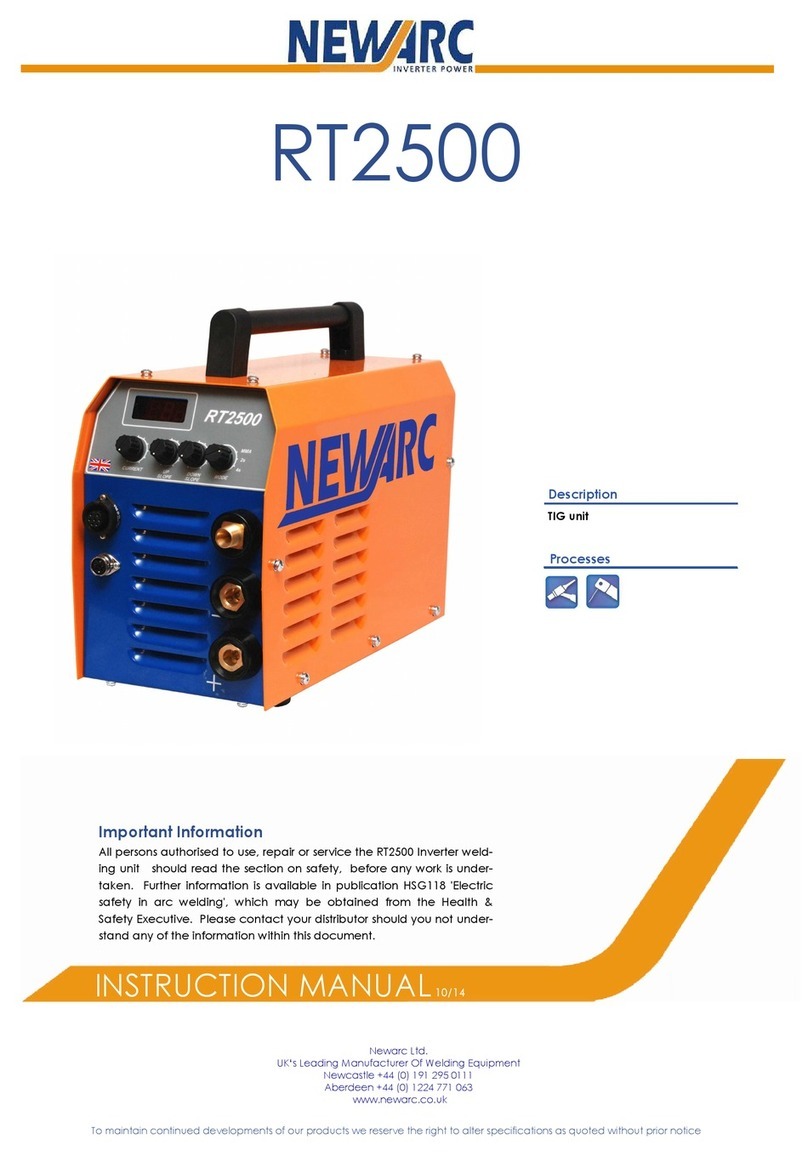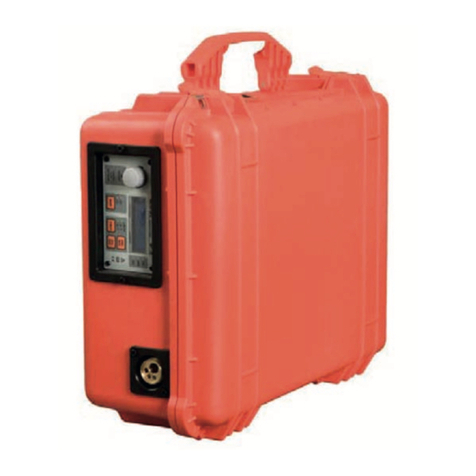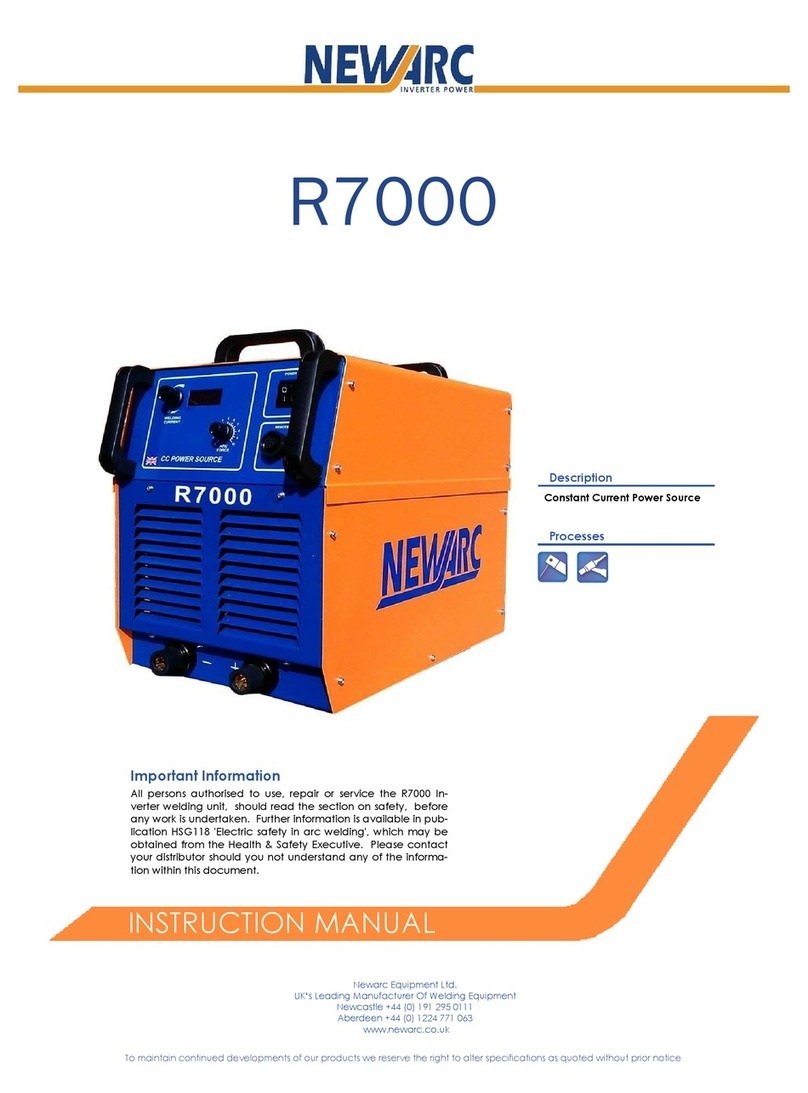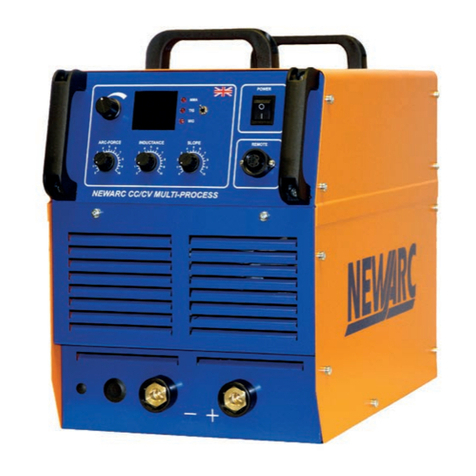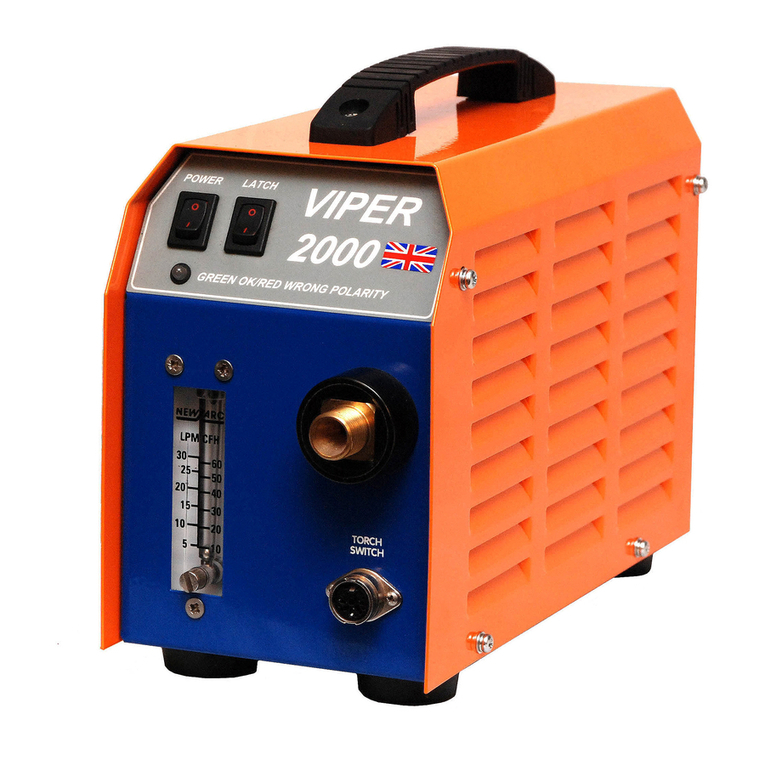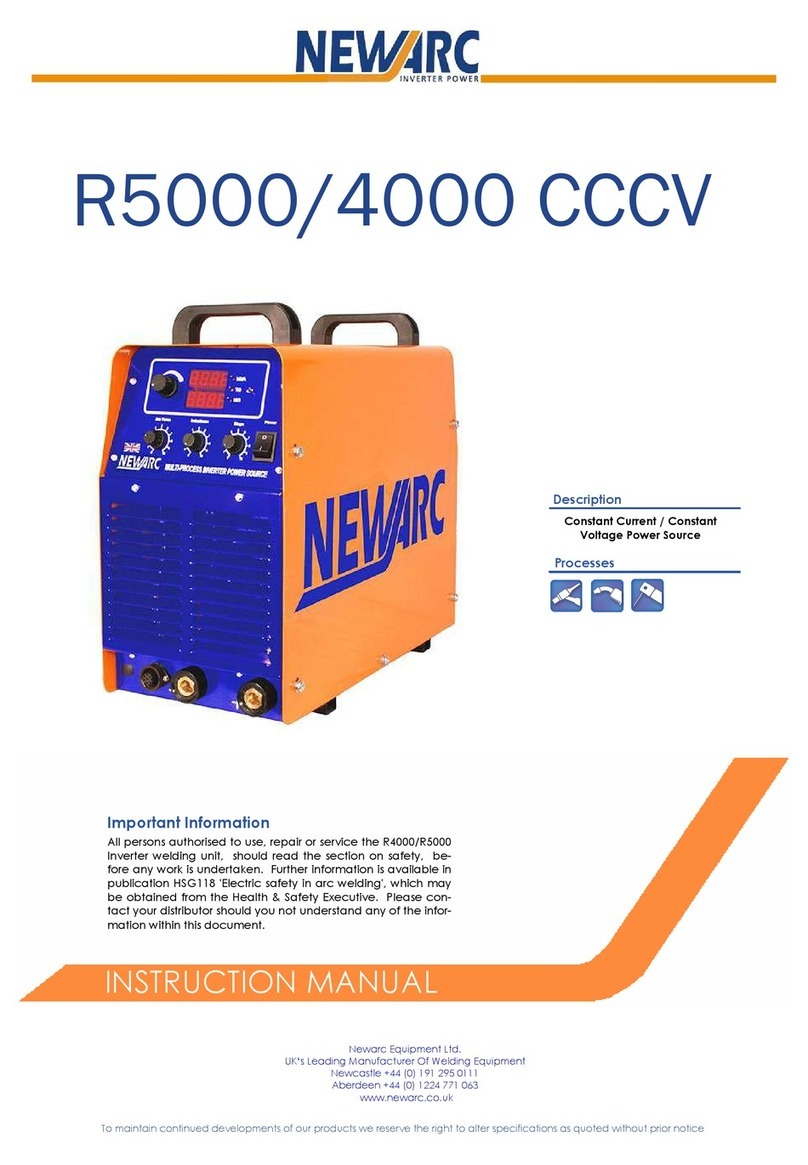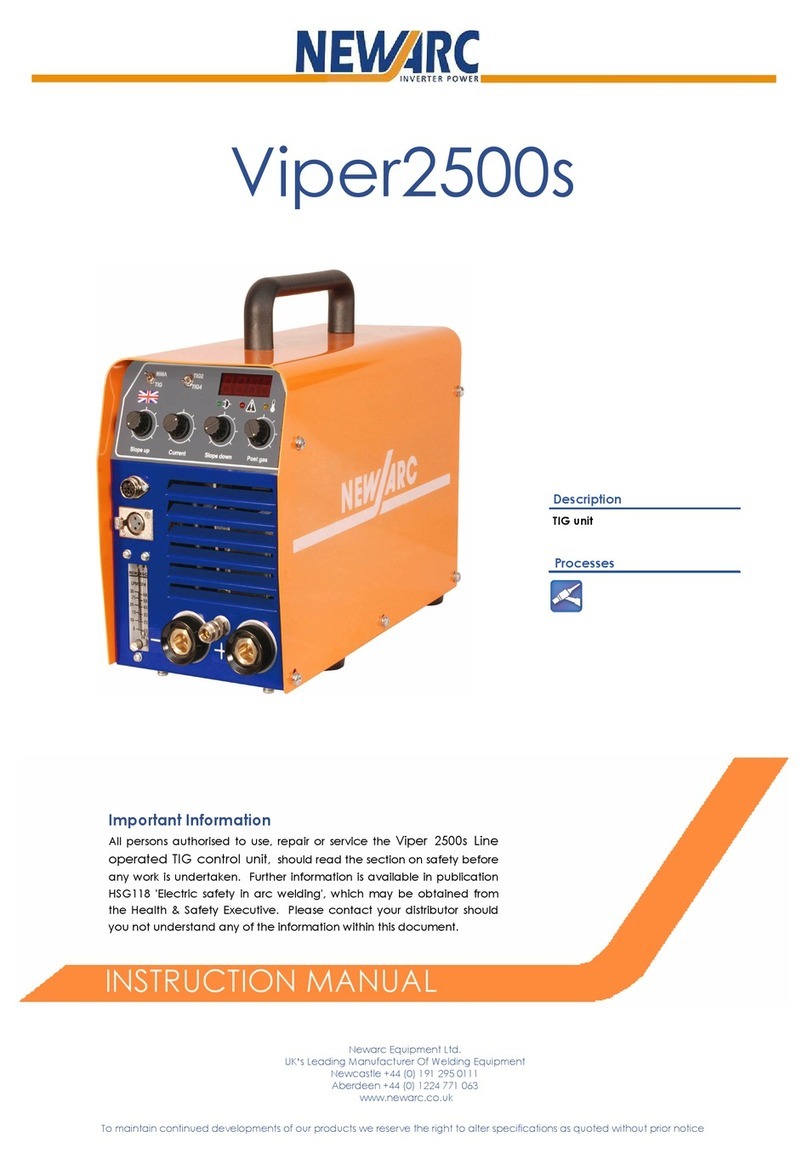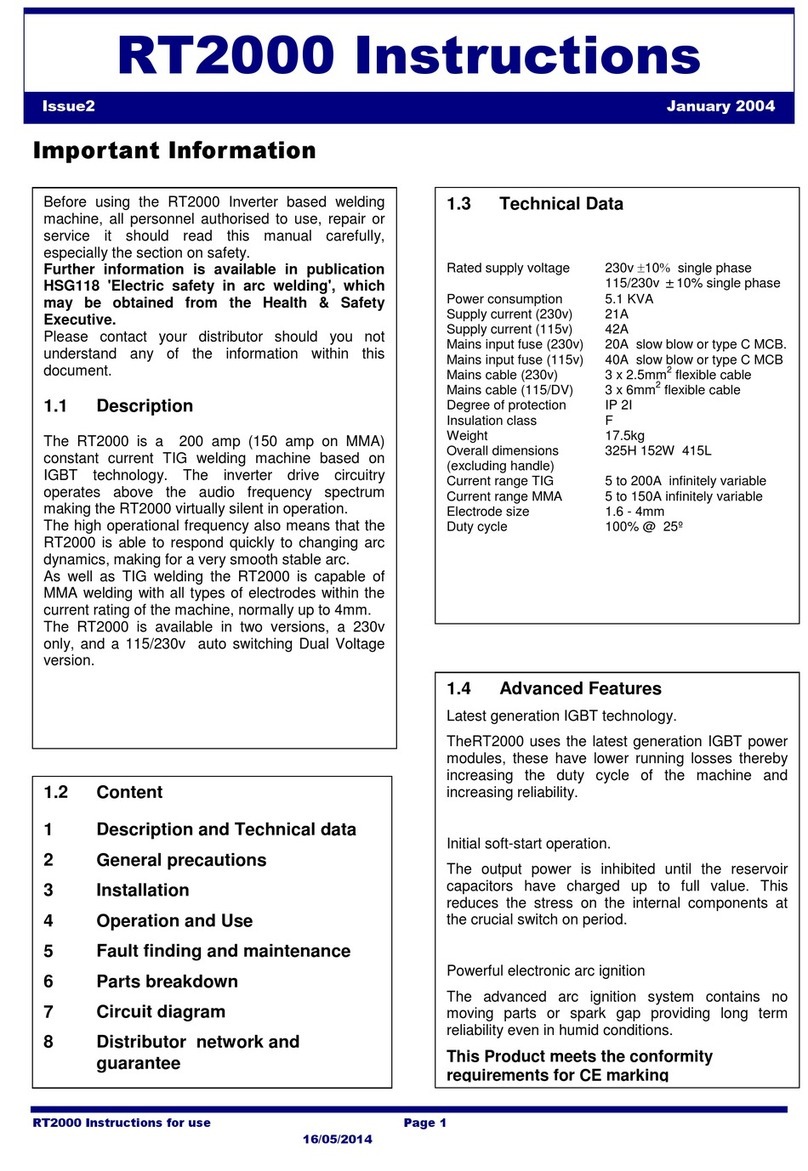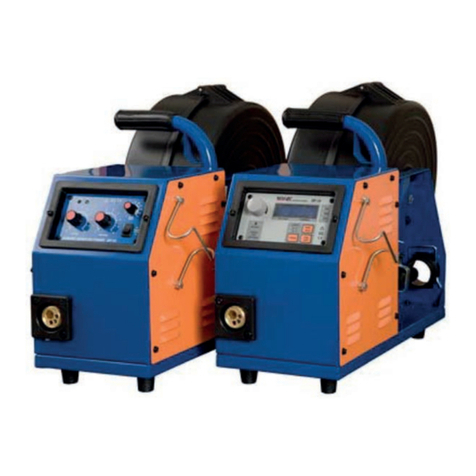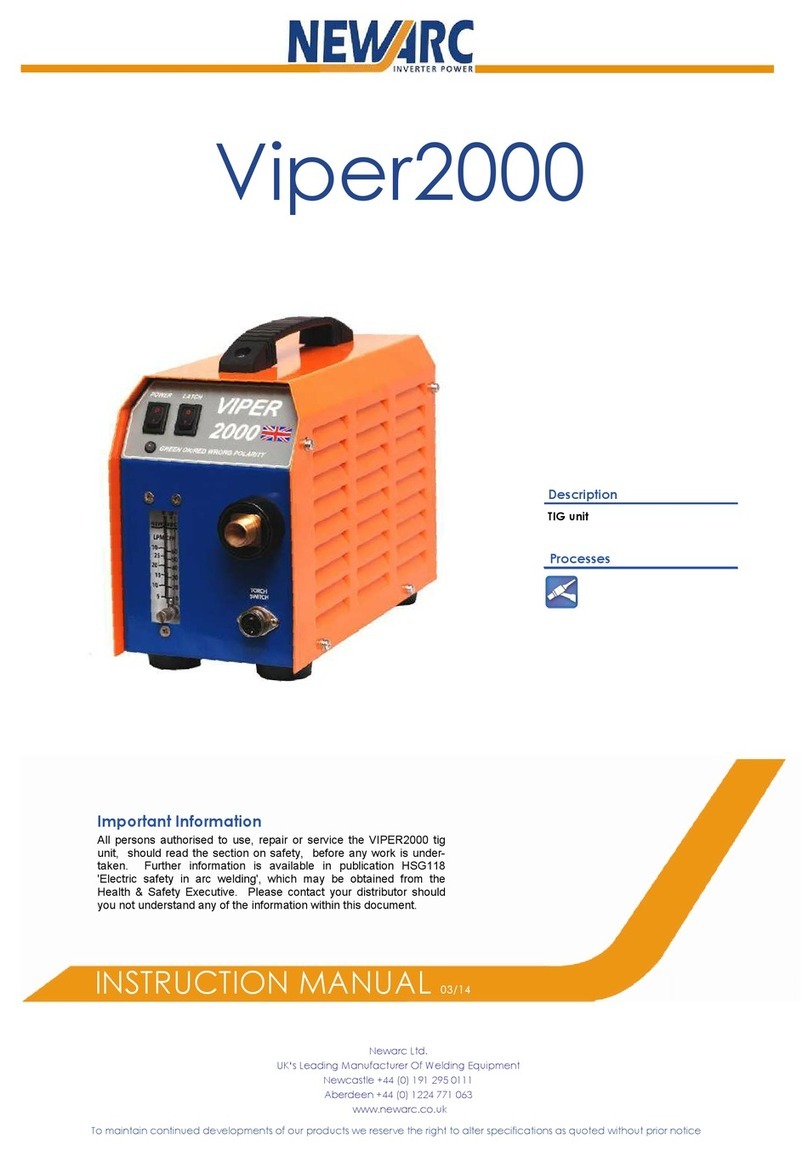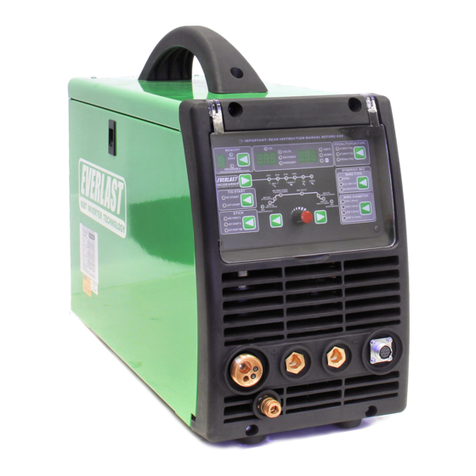R2500
SECTION 1 — SA ETY
ire and Explosions
Pay attention to fire and safety regulations in force at the
welding site.
•
Remove all lammable or combustible materials rom
the welding area and the immediate vicinity.
•
Suitable ire ighting equipment must always be present
where welding is carried out.
•
Be aware that a ire risk is present or a considerable
time a ter welding operations have ceased because
o sparks and hot slag etc. Take suitable precautions
when you have inished welding.
•
Take care when welding containers that have held
lammable or combustible material, these should have
been specially cleaned be ore being given to the
welder. I in doubt do not weld them.
Burns
Be aware that burns may be the result of the heat involved
in the welding process, welding spatter or the Ultra Violet
Radiation given off by the arc itself.
•
Wear suitable ireproo clothing over all your body.
•
Wear protective gauntlets designed or welding use.
•
Wear a welding acemask itted with the correct ilter
shade suitable or the current at which you will be
welding.
•
Avoid wearing oily or greasy clothing as a spark may
ignite them. Where possible ensure that a suitable irst
aid kit and a irst aid person quali ied in the treatment
o burns are available nearby.
umes
Welding operations give off harmful fumes that are haz-
ardous to your health.
•
Make sure the welding area is well ventilated. Use suit-
able ume extractors or exhaust ans i necessary.
•
I the ventilation is not suitable then breathing appara-
tus may have to be used.
•
Do not weld plated metals or metals which contain
Lead, cadmium, Zinc, Mercury or Beryllium unless you
are wearing suitable breathing apparatus.
Electric Shock
•
Do not touch live electrical parts.
•
Do not work in wet or excessively humid areas and do
not site the R2500 on a wet sur ace.
•
Avoid touching the work piece whilst welding.
•
Do not use the R2500 without it’s protective cover.
•
Keep your clothing and body dry.
The safe handling of gas cylinders
The R2500 uses argon when TIG welding using the TIG300.
This is an inert gases and can displace oxygen in the at-
mosphere leading to asphyxiation.
•
Note! I dropped the gas cylinder may explode.
•
Check the gas cylinder, pressure regulator and gas
hoses regularly or leaks and discard any suspect item.
•
Do not try to directly connect a gas cylinder to the
TIG300 without using a pressure-reducing regulator de-
signed or use with argon.
•
Do not use gas cylinders whose o contents you are
unsure.
•
The Argon cylinder must be securely astened to a
wall or placed in a specially designed cylinder carrier.
•
Always turn o the valve on the gas cylinder when you
have inished welding.
•
Always install and use pressure regulators in accor-
dance with the manu acturers instructions.
•
It is advisable, when attaching the regulator to the gas
bottle, to brie ly turn on the bottle valve to expel any
oreign objects that may be present. These may later
block the solenoid valve o the machine i not dealt
with. Turn your ace away rom the bottle valve when
carrying out this action.
urther information is available in publication HSG118
'The safe use of compressed gases in welding, flame
cutting and allied processes', which may be ob-
tained from the Health & Safety Executive.
Welding and earth return cables
•
Earth return and electrode holder cables must have a
cross sectional area o at least 35mm
2
.
•
Only use copper cables, the use o Aluminium cables
may have a detrimental e ect on the per ormance o
the machine.
•
Regularly inspect welding cables and connectors or
wear abrasion and corrosion. Corroded cables and
connectors may overheat and become a ire hazard.
•
Ensure that all welding connectors are ully mated, the
connectors should be pushed ully home and then
turned clockwise to lock. I the connectors are not
mated ully they may overheat and become a ire
hazard.
•
I possible, asten the earth return clamp directly to the
job to be welded and ensure that the sur ace is ree
rom rust and paint.

